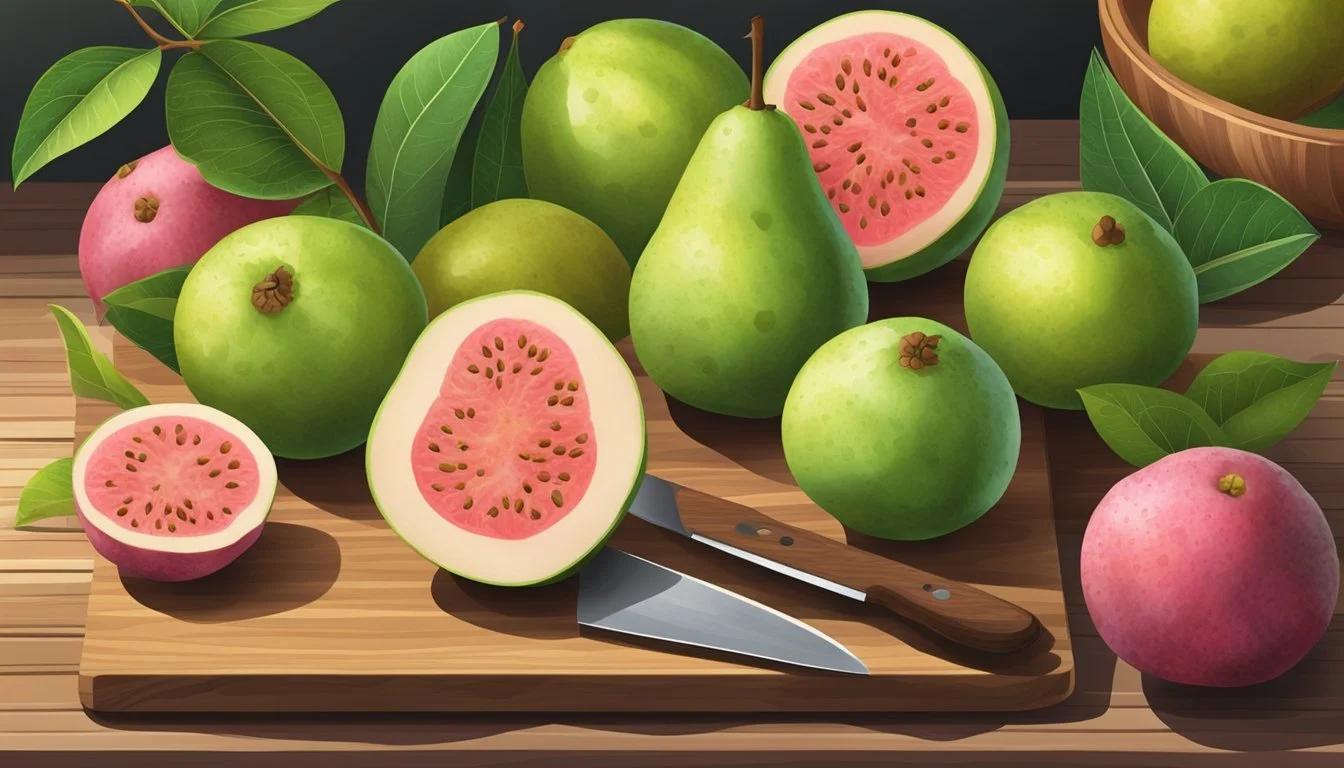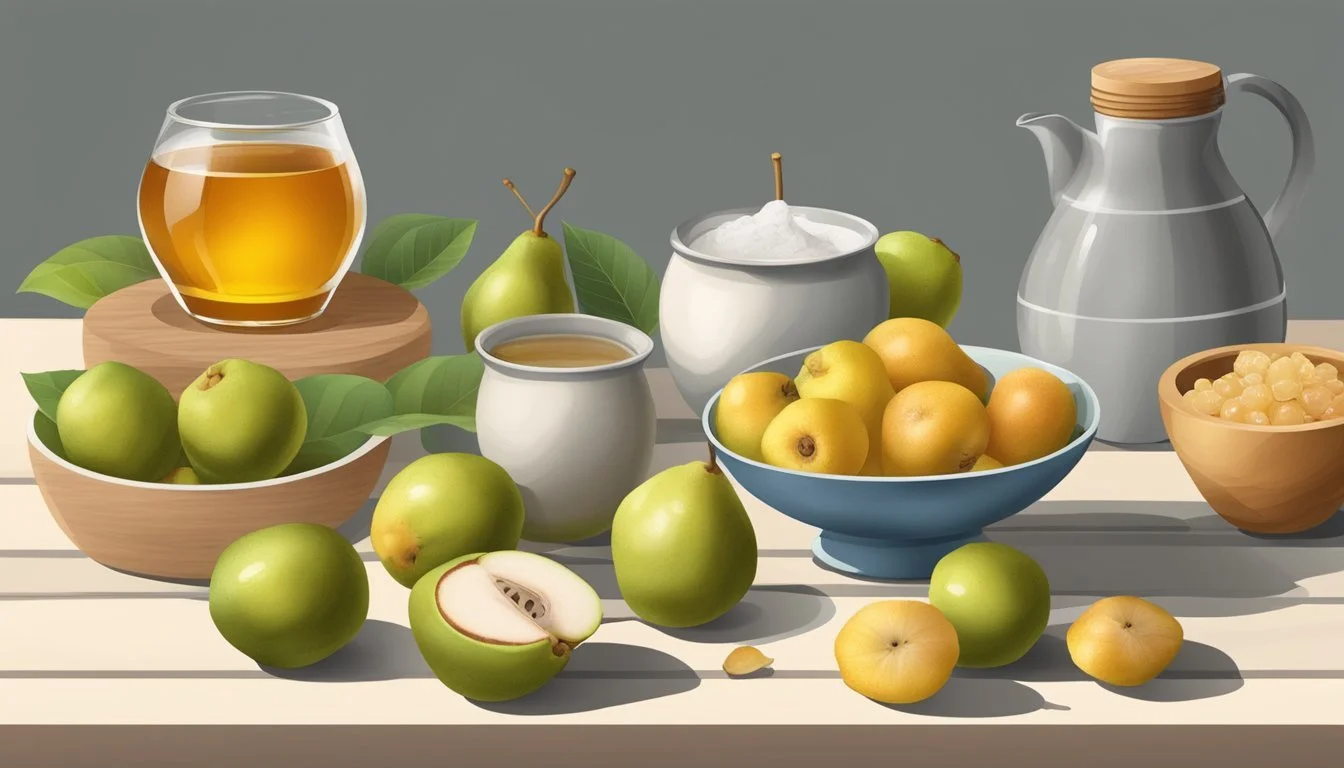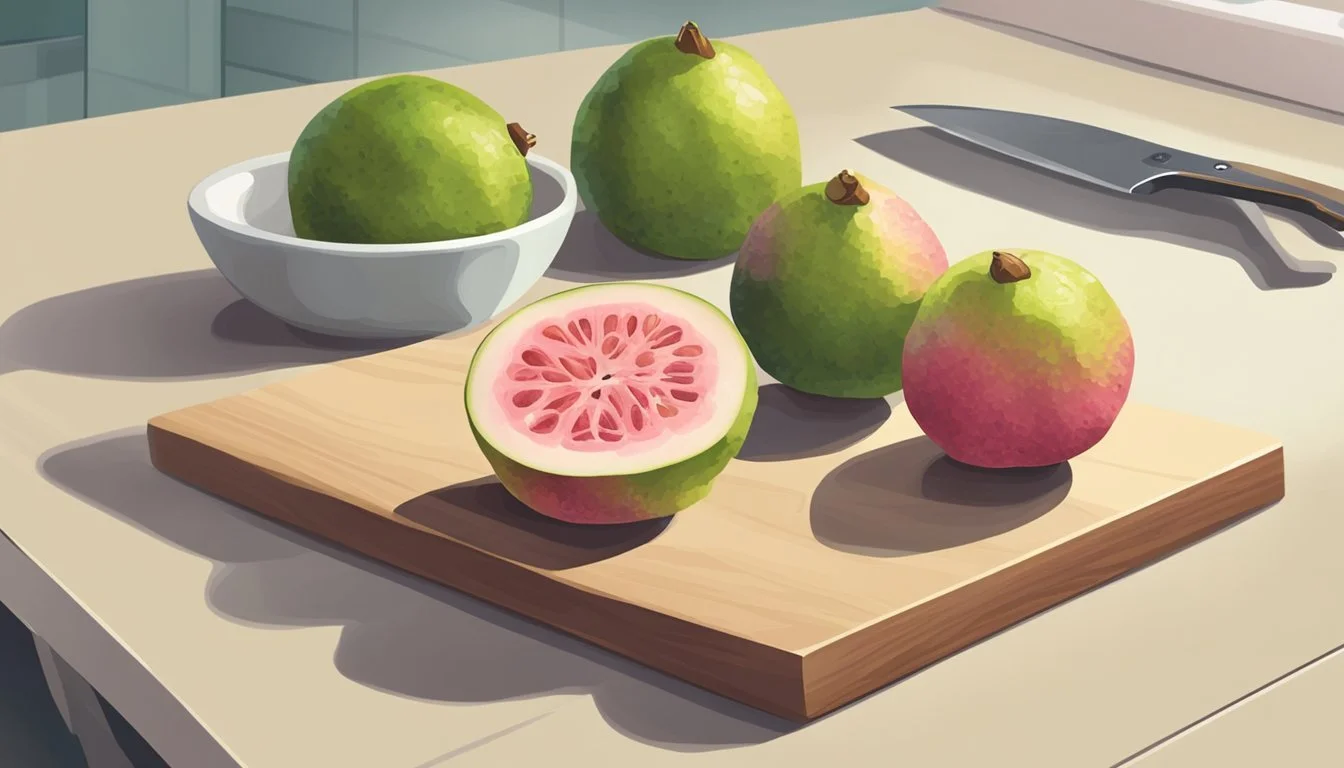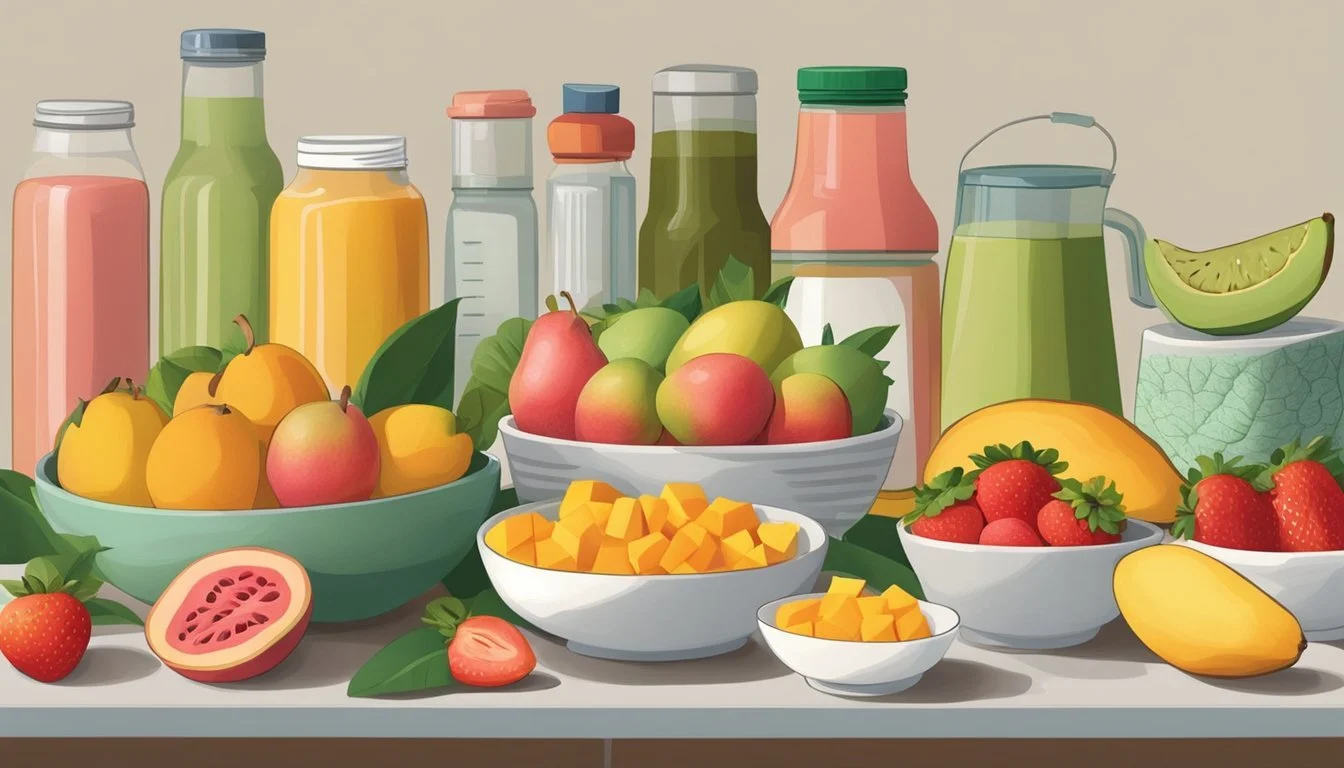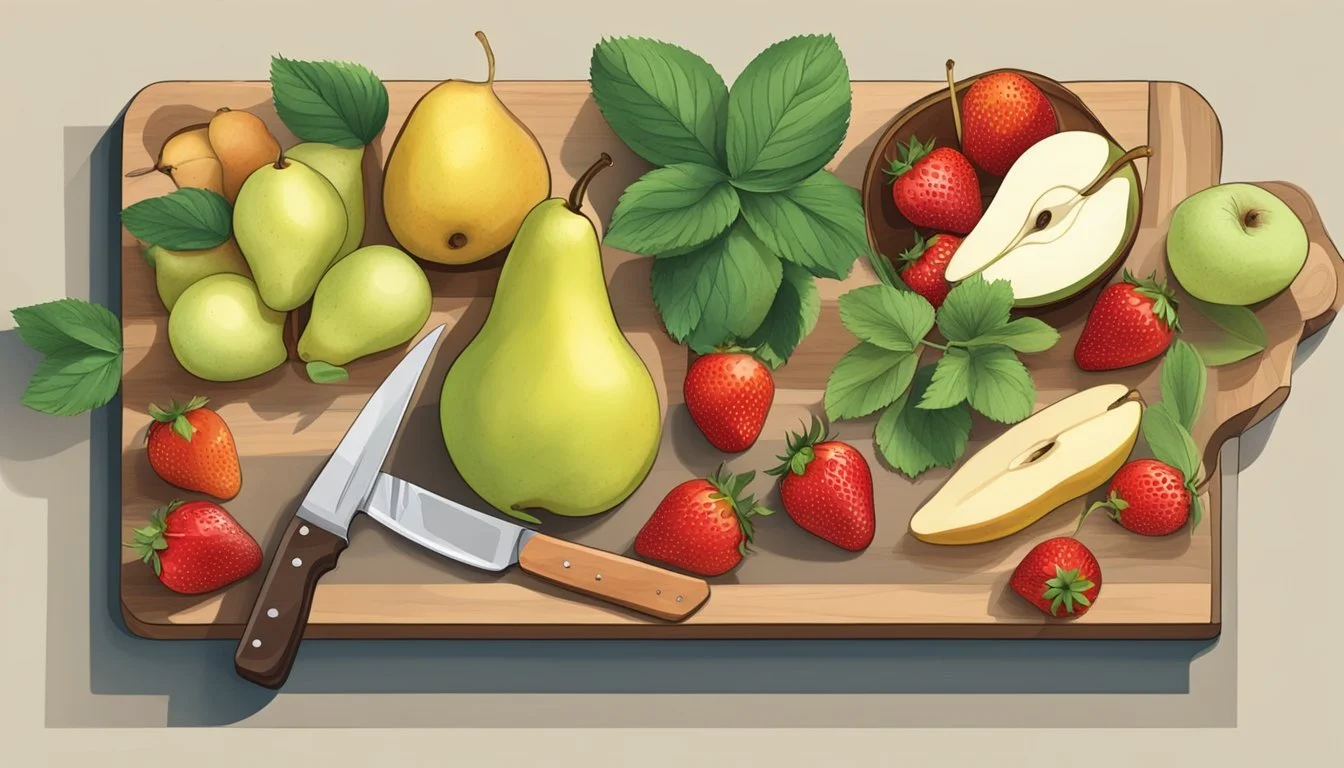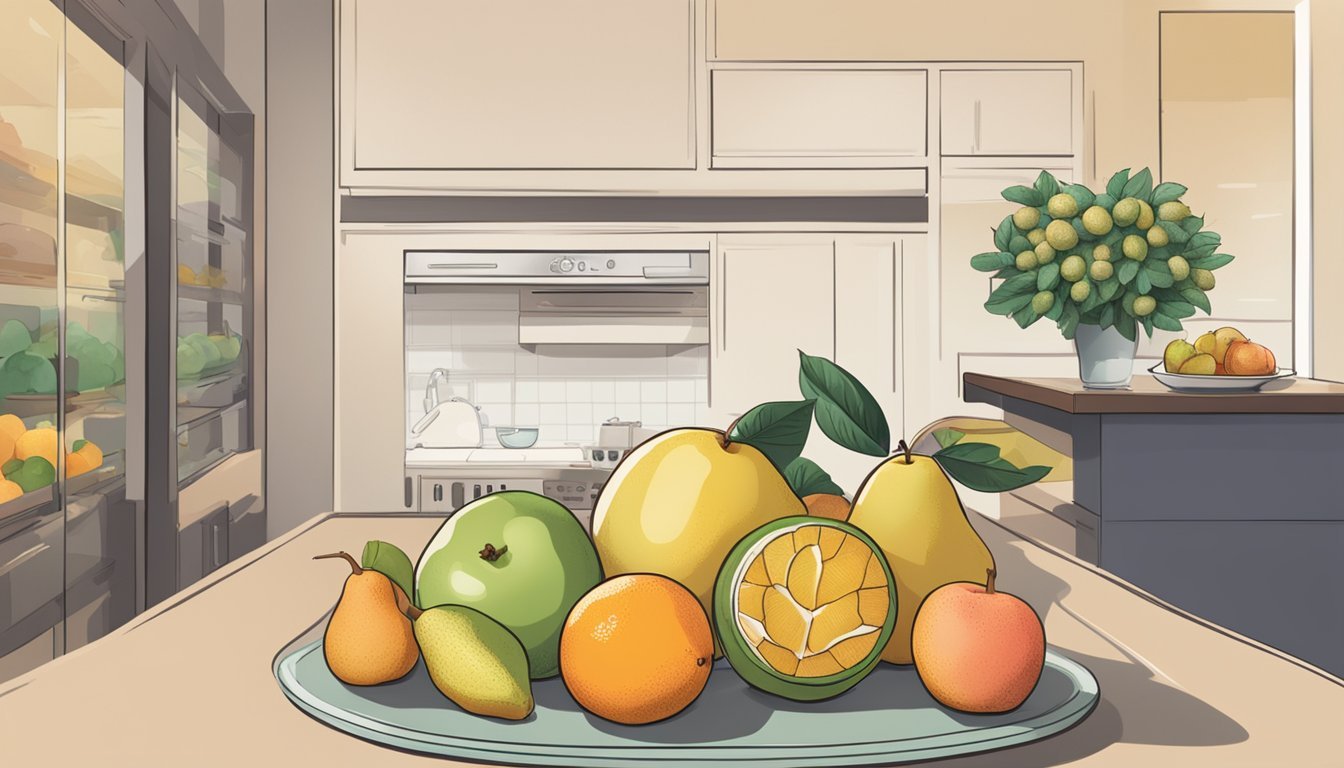Guava Substitutes
Best Alternatives for Recipes
From savory dishes to delectable desserts, guava paste is a beloved ingredient in many culinary traditions. Yet, there are times when it may not be readily available. One of the best guava paste substitutes is fig paste, closely mimicking its texture and fruity flavor. While fig jam can also be considered, its thinner consistency might not always be suitable.
Other alternatives include fresh guavas and quince paste, each offering unique taste profiles to enhance your dishes. Fresh guavas provide an authentic flavor, making them an excellent choice when recipe flexibility allows. Apple paste and fig paste or jam also serve as reliable substitutes in various culinary applications.
Choosing the right substitute can elevate your recipe and ensure that you don't miss out on the delightful flavor that guava paste brings. Experimenting with these alternatives can be a fun and rewarding culinary journey, allowing you to discover new taste combinations and textures.
Understanding Guava Substitutes
Guava paste and its substitutes play an essential role in many culinary recipes, offering a sweet and tangy flavor that can enhance various dishes. Each substitute brings a unique element while trying to match the flavor and texture of guava paste.
What Is Guava Paste
Guava paste is a dense, sweet, and slightly tangy product made from guava fruit and sugar. It has a smooth, jelly-like consistency and is often used in cooking and baking. The paste is popular in Latin American and Caribbean cuisines and is used to add depth of flavor to both sweet and savory dishes.
Common Ingredients in Guava Paste:
Guava fruit
Sugar
Citrus juice (sometimes)
Guava Flavor Profile
Guava has a unique flavor profile that is both sweet and tangy, often described as a mix between a strawberry and a pear. This flavor is prominent in the paste, making it a delightful addition to various recipes.
Key FlavorNotes:
Sweetness: Rich and intensifies with cooking.
Tanginess: Lightly sour undertones to balance the sweetness.
The texture of guava paste also plays a crucial role, providing a chewy consistency that can be pivotal in certain recipes.
Common Uses for Guava in Recipes
Guava paste is versatile and can be used in both sweet and savory dishes. It pairs well with cheese, making it excellent for appetizers like guava and cheese pastries. In desserts, it enhances cakes, tarts, and even ice creams. For savory dishes, it can be used as a glaze for meats or a filling in pastries.
Typical Recipe Applications:
Pastries and baked goods
Cheese pairings
Meat glazes
Desserts like cakes and tarts
By understanding these substitutes, you can easily replace guava paste in your favorite recipes without compromising on taste or texture.
Selecting Guava Substitutes
Choosing the right substitute for guava paste or fresh guava involves evaluating factors such as texture and flavor to match the specific needs of your recipe.
Criteria for Choosing a Substitute
When selecting a substitute for guava, consider the intended use of the guava in your dish. For example, is it used in baking, a sauce, or simply as a topping? Determine if the substitute needs to have similar sweetness, fruity notes, and some degree of tanginess.
Certain substitutes like quince paste or apple paste are suitable for desserts. Meanwhile, fig jam or mango puree may work well in both sweet and savory dishes.
Availability is another criterion; ensure the substitute is easy to find or make.
Texture Considerations
Texture is crucial in achieving the desired consistency of your dish. Guava paste has a thick, dense texture which is key in recipes such as pastries and sauces. If a similar texture is needed, options like quince paste or fig paste are recommended due to their similar firmness and density.
For recipes that can handle more fluidity, fig jam or even apricot preserves can be considered, though these are softer and more spreadable.
Matching the texture accurately ensures the dish retains its intended mouthfeel and structure.
Flavor Similarities
Flavor plays a critical role when substituting guava. The sweet, fruity, and slightly tangy flavor of guava is unique but can be mimicked by using comparable fruits.
Fresh guavas are the closest in flavor and are recommended if available. Quince paste offers a similar fruitiness with slight tanginess. Fig paste also presents a rich, fruity profile, though it tends to be sweeter and less tangy.
Apple paste provides a mild, sweet, and slightly tart taste which can work well in balanced recipes.
Choosing a substitute that closely mimics guava's flavor ensures that the essence of the dish is maintained.
Sweet Substitutes
When looking for a sweet alternative to guava paste, consider various fruit jams that can offer similar flavors and textures. Each type of jam can bring a distinct taste and culinary application to both sweet and savory dishes.
Strawberry Jam
Strawberry jam is a popular fruit preserve known for its bright red color and sweet taste. It is made by cooking strawberries with sugar and sometimes pectin. Strawberry jam can substitute for guava paste in desserts such as cakes and pastries, adding a slightly different but equally delightful fruity flavor. The smooth texture makes it suitable for spreading on toast, mixing in yogurt, or using as a filling for cookies and tarts.
Apricot Jam
Apricot jam offers a rich and slightly tangy sweetness, derived from cooked apricots mixed with sugar. With its vivid orange hue, apricot jam can stand in for guava paste in various recipes. It works particularly well in glazes for meats or as a filling in baked goods like danishes and turnovers. The smooth, dense consistency allows it to blend seamlessly into sauces and dressings, providing both sweetness and depth of flavor.
Peach Jam
Peach jam boasts a mild, sweet taste with a gentle hint of tartness, making it an excellent guava paste substitute. Made by simmering ripe peaches with sugar, this jam features a golden color and a fragrant aroma. Peach jam can enhance the flavor of many dishes, from breakfast items like waffles and crepes to savory pairings with pork or chicken. Its thick texture helps to bind ingredients together while imparting a natural fruitiness.
Mango Jam
Mango jam is another viable substitute, offering a tropical sweetness akin to guava paste. Prepared from ripe mangoes and sugar, this jam has a smooth, rich consistency and a vibrant yellow color. It complements both sweet and savory dishes, making it versatile in the kitchen. Use mango jam to glaze roast meats, enrich curry sauces, or as a topping for ice creams and cheesecakes.
Savory Pairings and Substitutes
When looking for substitutes for guava paste in savory dishes, four alternatives stand out: plum jam, apple butter, cranberry sauce, and quince paste. Each provides a distinct flavor profile and texture that can complement various recipes.
Plum Jam
Plum jam offers a balance of sweetness and tartness, making it a versatile substitute for guava paste. Its thick consistency can hold up well in savory recipes such as glazes for meats or as a component in sauces.
Due to its fruity flavor, plum jam pairs excellently with spices like ginger or cardamom. In savory dishes, it can replace guava paste on a 1:1 ratio. When used in marinades, it adds a subtle sweetness that enhances the overall flavor.
Apple Butter
Apple butter brings a smooth, spreadable texture and a mild, sweet flavor, making it suitable for savory recipes. It can be used in dishes like pork chops or as a complement to cheeses and breads.
Apple butter is less acidic than guava paste, so consider adding a splash of vinegar or lemon juice to achieve a similar tangy effect. It pairs well with herbs like rosemary and thyme, adding depth to the savory dish without overpowering other ingredients.
Cranberry Sauce
Cranberry sauce adds a bold, tart taste to savory dishes and can be a successful substitute for guava paste. This substitute works well in recipes where a touch of sourness is desired, such as poultry sauces or holiday dishes.
The texture of cranberry sauce, which can be whole or jellied, suits both chunky and smooth sauces. When using cranberry sauce, balance its tartness with a bit of sweetener if necessary, or blend it with other ingredients to soften its intensity.
Quince Paste
Quince paste, or "membrillo," offers a dense, jellied texture and a slightly floral, tart flavor. It can be used as a substitute for guava paste, especially in savory dishes that benefit from a firm, sliceable consistency.
Quince paste pairs nicely with strong cheeses and can be melted into glazes for meats or incorporated into savory pastries. Due to its firm texture, thinly slicing or grating quince paste can help distribute its flavor evenly in a dish.
Alternative Substitutes for Baking
When substituting guava paste in baking, options such as fig jam or paste, lemon curd, and various thick consistency alternatives can work incredibly well. Each substitute brings a unique texture and flavor that complements a variety of baked goods, including tarts, pies, and empanadas.
Fig Jam or Paste
Fig jam or paste is a popular substitute for guava paste. Its natural sweetness and slightly grainy texture align well with recipes requiring a fruity flavor. Fig jam, made from ripe figs, has a thick, creamy consistency. In baked goods like tarts or pies, fig jam or paste can be used as a filling to provide both moisture and flavor. While the tiny seeds in fig paste may affect the mouthfeel, they add a unique twist to the texture that some bakers may find desirable.
Lemon Curd
Lemon curd is another excellent substitute, known for its rich, tangy flavor and smooth texture. Made from lemon juice, sugar, and eggs, lemon curd offers a bright citrus taste that pairs well with many desserts. It works beautifully as a filling in tarts and pies, adding a zesty contrast to sweet pastries. Moreover, its thick consistency ensures that it holds up well during baking, making it a reliable option for maintaining the structural integrity of baked goods.
Thick Consistency Substitutes
For those looking to replicate the thick consistency of guava paste without the specific flavor, apple paste or quince paste can be effective alternatives. These pastes provide the necessary body and sweetness required for many recipes. Apple paste offers a mild, versatile flavor that complements various baked items, while quince paste delivers a more unique and slightly tart taste. Both options can be used in fillings for tarts, pies, or empanadas, ensuring the right texture is achieved without compromising the recipe's integrity. Adjust sweetness levels as needed, especially if substituting in recipes that originally call for the distinct taste of guava.
Substitutes in Glazes, Sauces, and Condiments
Several substitutions can be employed in glazes, sauces, and condiments to achieve a similar taste, texture, and tangy flavor. These alternatives can offer a range of consistencies and sweetness levels to suit various culinary needs.
Fruit Purees
Fruit purees can be excellent substitutes for guava in glazes and sauces. Options like apricot, peach, and mango provide similar sweetness and can be used in equal measures.
To prepare, blend the chosen fruit until smooth. Cooking the puree with a bit of sugar can enhance flavor and thicken the mixture. This method works well for sweet glazes on pastries or savory sauces that need a bit of fruity tang.
Honey and Pectin Combination
Honey mixed with pectin can replicate the thick, spreadable texture of guava paste. Honey adds sweetness, while pectin helps with gelling and setting. This combination is ideal for making glazes for meats or creating rich sauces.
Heat the honey and mix in pectin as it simmers gently. Adjust pectin amounts based on desired thickness, adding lemon juice for an extra tangy flavor. This substitute works nicely in both sweet and savory applications.
Juice Concentrates
Juice concentrates from fruits like apple, pear, or apricot can serve as liquid bases for various condiments and glazes. These concentrates are flavorful and can be thickened with a bit of cornstarch or reduced over heat.
Utilize apple juice concentrate for a milder taste or apricot concentrate for a more pronounced sweetness. Mixing these with spices and herbs can yield flavorful sauces. Always test for consistency, adjusting thickness as needed by simmering longer or adding thickeners.
Culinary Applications with Substitutes
Guava paste substitutes can be creatively applied across various culinary domains to enhance flavors. This section explores the use of these alternatives in dishes with meat and poultry, desserts and pastries, and cheese pairings.
Meat and Poultry
When using guava paste substitutes in meat and poultry dishes, fig paste and mango puree stand out. Fig paste adds a rich, fruity layer complemented by tiny seeds, which may alter texture slightly. Mango puree, with its balance of sweetness and acidity, offers a delightful glaze or marinade for meats like pork or chicken, providing a tropical twist.
For example, a pork tenderloin glazed with mango puree can achieve a moist, flavorful dish. These alternatives enhance tastiness, making them versatile in savory culinary applications. Additionally, combining cumin or coriander with these substitutes can impart complexity to a BBQ sauce or stir-fry.
Desserts and Pastries
In desserts and pastries, substituting guava paste with fig jam or papaya paste can yield delicious results. Fig jam, with its thick and creamy texture, perfectly suits baked goods like empanadas or pie fillings. Its rich flavor adds depth to sweets, ensuring a pleasant gastronomic experience.
On the other hand, papaya paste can enrich desserts with a unique tropical flair. This paste is smooth and sweet, blending seamlessly into pastries such as turnovers or tarts. The vibrant flavors it brings can turn a simple dessert into a remarkable treat, offering an exciting alternative to the traditional guava paste.
Cheese Pairings
For cheese pairings, using substitutes like fig paste or mango puree can enhance cheese boards. Fig paste’s grainy texture and sweetness pair well with creamy cheeses like brie or goat cheese. This combination creates a balanced flavor profile, contrasting the boldness of cheese with the subtleness of fig.
Mango puree also pairs nicely with harder cheeses, providing a contrast in texture and taste. The puree’s acidity and sweetness cut through the richness of cheeses like sharp cheddar or aged gouda, creating a harmonious balance. These substitutes show versatility, turning ordinary cheese boards into gourmet presentations.
Creating Your Own Guava Substitute
Creating your own guava substitute allows for flexibility in taste and texture. Readers will learn methods for making homemade guava paste, utilizing fresh guavas, and blending spices and fruit flavors.
Homemade Guava Paste
To make homemade guava paste, start with fresh guavas. Peel and deseed the guavas, then blend the fruit into a smooth puree. Transfer this puree into a large pot and bring to a boil. Gradually add sugar, 1 cup at a time, while continuously stirring.
Continue cooking until the mixture thickens and holds a line drawn at the bottom of the pot, typically taking about 35-40 minutes. Pour the thickened paste into a parchment-lined pan and let it cool overnight. Store the finished guava paste in airtight containers for later use in desserts and savory dishes.
Using Fresh Guavas
Fresh guavas offer a natural, authentic flavor. Perfectly ripe guavas can be sliced and used directly in recipes. It’s important to remove seeds and skin for a smoother texture. Fresh guavas work well in salads, sauces, or as a topping for desserts like cakes and pastries.
Their natural sweetness means less added sugar is required. It's an excellent choice for those seeking a more health-conscious alternative. When using fresh guavas, consider blending them for a smooth consistency or dicing finely for a more chunky texture in your dishes.
Combining Spices and Fruit Flavors
Combine spices and other fruit flavors to mimic the unique taste of guava. Start with fruit preserves like quince or fig paste, which have a similar consistency. Add a pinch of cinnamon or clove to bring in aromatic warmth.
For a homemade blend, mix blended apples, pears, or other fruits with your chosen spices. This combination can closely replicate the sweet, slightly tangy profile of guava. Adjust the proportions to suit the specific recipe and palate preference. Using this method, create a versatile substitute that enhances both sweet and savory dishes.
Conclusion
Guava substitutes offer several versatile options for those times when guava or guava paste isn't readily available. Many of these substitutes can be found in ordinary pantry, refrigerator, or grocery store items, making them easy to incorporate into daily cooking.
Fresh guavas are an excellent substitute for guava paste when available. They keep the essence of the original recipe while adding a refreshing texture.
For those looking for something with a similar consistency to guava paste, quince paste and fig paste are ideal. Both options provide a comparable texture, though fig paste includes small seeds that may alter the mouthfeel.
Apple paste is another viable option, especially in desserts. It offers a similar sweetness and can be easily found in most grocery stores.
Raspberry jam and peach jam also work well as guava paste substitutes. They bring a sweet-tart flavor to recipes, although adjustments in sugar content may be required due to their inherent sweetness.
These substitutes ensure that missing guava or guava paste doesn't hinder your recipe's success. Experimenting with these alternatives may even lead to discovering new favorite flavors and textures.

